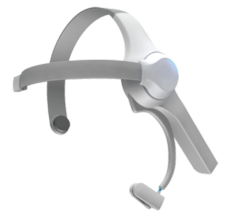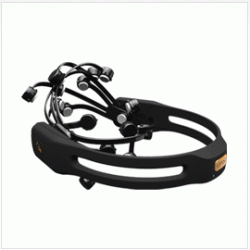-
NI Community
- Welcome & Announcements
-
Discussion Forums
- Most Active Software Boards
- Most Active Hardware Boards
-
Additional NI Product Boards
- Academic Hardware Products (myDAQ, myRIO)
- Automotive and Embedded Networks
- DAQExpress
- DASYLab
- Digital Multimeters (DMMs) and Precision DC Sources
- Driver Development Kit (DDK)
- Dynamic Signal Acquisition
- FOUNDATION Fieldbus
- High-Speed Digitizers
- Industrial Communications
- IF-RIO
- LabVIEW Communications System Design Suite
- LabVIEW Electrical Power Toolkit
- LabVIEW Embedded
- LabVIEW for LEGO MINDSTORMS and LabVIEW for Education
- LabVIEW MathScript RT Module
- LabVIEW Web UI Builder and Data Dashboard
- MATRIXx
- Hobbyist Toolkit
- Measure
- NI Package Manager (NIPM)
- Phase Matrix Products
- RF Measurement Devices
- SignalExpress
- Signal Generators
- Switch Hardware and Software
- USRP Software Radio
- NI ELVIS
- VeriStand
- NI VideoMASTER and NI AudioMASTER
- VirtualBench
- Volume License Manager and Automated Software Installation
- VXI and VME
- Wireless Sensor Networks
- PAtools
- Special Interest Boards
- Community Documents
- Example Programs
-
User Groups
-
Local User Groups (LUGs)
- Denver - ALARM
- Bay Area LabVIEW User Group
- British Columbia LabVIEW User Group Community
- Chicago LabVIEW User Group
- Egypt NI Chapter
- GUNS
- Houston Area LabVIEW Community
- LabVIEW - University of Applied Sciences Esslingen
- [IDLE] LabVIEW User Group Stuttgart
- LUGG - LabVIEW User Group at Goddard
- LUGNuts: LabVIEW User Group for Connecticut
- Madison LabVIEW User Group Community
- Mass Compilers
- Melbourne LabVIEW User Group
- Midlands LabVIEW User Group
- Milwaukee LabVIEW Community
- Minneapolis LabVIEW User Group
- CSLUG - Central South LabVIEW User Group (UK)
- Nebraska LabVIEW User Community
- New Zealand LabVIEW Users Group
- NI UK and Ireland LabVIEW User Group
- NOCLUG
- Orange County LabVIEW Community
- Ottawa and Montréal LabVIEW User Community
- Washington Community Group
- Phoenix LabVIEW User Group (PLUG)
- Politechnika Warszawska
- PolŚl
- Rutherford Appleton Laboratory
- Sacramento Area LabVIEW User Group
- San Diego LabVIEW Users
- Sheffield LabVIEW User Group
- South East Michigan LabVIEW User Group
- Stockholm LabVIEW User Group (STHLUG)
- Southern Ontario LabVIEW User Group Community
- SoWLUG (UK)
- Space Coast Area LabVIEW User Group
- Sydney User Group
- Top of Utah LabVIEW User Group
- Utahns Using TestStand (UUT)
- UVLabVIEW
- Western NY LabVIEW User Group
- Western PA LabVIEW Users
- Orlando LabVIEW User Group
- Aberdeen LabVIEW User Group (Maryland)
- Gainesville LabVIEW User Group
- LabVIEW Team Indonesia
- Ireland LabVIEW User Group Community
- Louisville KY LabView User Group
- NWUKLUG
- LVUG Hamburg
- LabVIEW User Group Munich
- LUGE - Rhône-Alpes et plus loin
- London LabVIEW User Group
- VeriStand: Romania Team
- DutLUG - Dutch LabVIEW Usergroup
- WaFL - Salt Lake City Utah USA
- Highland Rim LabVIEW User Group
- NOBLUG - North Of Britain LabVIEW User Group
- North Oakland County LabVIEW User Group
- Oregon LabVIEW User Group
- WUELUG - Würzburg LabVIEW User Group (DE)
- LabVIEW User Group Euregio
- Silesian LabVIEW User Group (PL)
- Indian LabVIEW Users Group (IndLUG)
- West Sweden LabVIEW User Group
- Advanced LabVIEW User Group Denmark
- Automated T&M User Group Denmark
- UKTAG – UK Test Automation Group
- Budapest LabVIEW User Group (BudLUG)
- South Sweden LabVIEW User Group
- GLA Summit - For all LabVIEW and TestStand Enthusiasts!
- Bangalore LUG (BlrLUG)
- Chennai LUG (CHNLUG)
- Hyderabad LUG (HydLUG)
- LUG of Kolkata & East India (EastLUG)
- Delhi NCR (NCRLUG)
- Montreal/Quebec LabVIEW User Group Community - QLUG
- Zero Mile LUG of Nagpur (ZMLUG)
- LabVIEW LATAM
- LabVIEW User Group Berlin
- WPAFB NI User Group
- Rhein-Main Local User Group (RMLUG)
- Huntsville Alabama LabVIEW User Group
- LabVIEW Vietnam
- [IDLE] ALVIN
- [IDLE] Barcelona LabVIEW Academic User Group
- [IDLE] The Boston LabVIEW User Group Community
- [IDLE] Brazil User Group
- [IDLE] Calgary LabVIEW User Group Community
- [IDLE] CLUG : Cambridge LabVIEW User Group (UK)
- [IDLE] CLUG - Charlotte LabVIEW User Group
- [IDLE] Central Texas LabVIEW User Community
- [IDLE] Cowtown G Slingers - Fort Worth LabVIEW User Group
- [IDLE] Dallas User Group Community
- [IDLE] Grupo de Usuarios LabVIEW - Chile
- [IDLE] Indianapolis User Group
- [IDLE] Israel LabVIEW User Group
- [IDLE] LA LabVIEW User Group
- [IDLE] LabVIEW User Group Kaernten
- [IDLE] LabVIEW User Group Steiermark
- [IDLE] தமிழினி
- Academic & University Groups
-
Special Interest Groups
- Actor Framework
- Biomedical User Group
- Certified LabVIEW Architects (CLAs)
- DIY LabVIEW Crew
- LabVIEW APIs
- LabVIEW Champions
- LabVIEW Development Best Practices
- LabVIEW Web Development
- NI Labs
- NI Linux Real-Time
- NI Tools Network Developer Center
- UI Interest Group
- VI Analyzer Enthusiasts
- [Archive] Multisim Custom Simulation Analyses and Instruments
- [Archive] NI Circuit Design Community
- [Archive] NI VeriStand Add-Ons
- [Archive] Reference Design Portal
- [Archive] Volume License Agreement Community
- 3D Vision
- Continuous Integration
- G#
- GDS(Goop Development Suite)
- GPU Computing
- Hardware Developers Community - NI sbRIO & SOM
- JKI State Machine Objects
- LabVIEW Architects Forum
- LabVIEW Channel Wires
- LabVIEW Cloud Toolkits
- Linux Users
- Unit Testing Group
- Distributed Control & Automation Framework (DCAF)
- User Group Resource Center
- User Group Advisory Council
- LabVIEW FPGA Developer Center
- AR Drone Toolkit for LabVIEW - LVH
- Driver Development Kit (DDK) Programmers
- Hidden Gems in vi.lib
- myRIO Balancing Robot
- ROS for LabVIEW(TM) Software
- LabVIEW Project Providers
- Power Electronics Development Center
- LabVIEW Digest Programming Challenges
- Python and NI
- LabVIEW Automotive Ethernet
- NI Web Technology Lead User Group
- QControl Enthusiasts
- Lab Software
- User Group Lead Network
- CMC Driver Framework
- JDP Science Tools
- LabVIEW in Finance
- Nonlinear Fitting
- Git User Group
- Test System Security
- Product Groups
- Partner Groups
-
Local User Groups (LUGs)
-
Idea Exchange
- Data Acquisition Idea Exchange
- DIAdem Idea Exchange
- LabVIEW Idea Exchange
- LabVIEW FPGA Idea Exchange
- LabVIEW Real-Time Idea Exchange
- LabWindows/CVI Idea Exchange
- Multisim and Ultiboard Idea Exchange
- NI Measurement Studio Idea Exchange
- NI Package Management Idea Exchange
- NI TestStand Idea Exchange
- PXI and Instrumentation Idea Exchange
- Vision Idea Exchange
- Additional NI Software Idea Exchange
- Blogs
- Events & Competitions
- Optimal+
- Regional Communities
- NI Partner Hub
-
 Maynimation
on:
Check out How-to documents for the new LabVIEW Biomedical Toolkit
Maynimation
on:
Check out How-to documents for the new LabVIEW Biomedical Toolkit
-
 ZJ.Gu
on:
Announcing the LabVIEW 2012 Biomedical Toolkit
ZJ.Gu
on:
Announcing the LabVIEW 2012 Biomedical Toolkit
- Newton_de_Faria on: Snooping on your brain
-
 Sundar...
on:
New LabVIEW drivers for low-cost EEG headsets
Sundar...
on:
New LabVIEW drivers for low-cost EEG headsets
-
 Steve.J
on:
The Fastest Growing Engineering Degree
Steve.J
on:
The Fastest Growing Engineering Degree
-
 Steve.J
on:
Join us at BMES 2010
Steve.J
on:
Join us at BMES 2010
-
 Steve.J
on:
Using the "Wiimote" Controller in Biomedical Research
Steve.J
on:
Using the "Wiimote" Controller in Biomedical Research
-
 GeoffJo
on:
Great "hidden" FDA training resources
GeoffJo
on:
Great "hidden" FDA training resources
-
 Coq_Rouge
on:
The NI licence policy exclude the "Touch Panel Module" from use in the medical segment
Coq_Rouge
on:
The NI licence policy exclude the "Touch Panel Module" from use in the medical segment
-
 Steve.J
on:
Where would you like to see NI go in the life sciences?
Steve.J
on:
Where would you like to see NI go in the life sciences?
Re: New LabVIEW drivers for low-cost EEG headsets
- Subscribe to RSS Feed
- Mark as New
- Mark as Read
- Bookmark
- Subscribe
- Printer Friendly Page
- Report to a Moderator
NeuroSky Brain Computer Interface

NeuroSky is a company that has developed advanced ASICs for acquiring electroencephalography (EEG), simplifying the challenge of adding EEG to instruments and products for education or even entertainment. NeuroSky has several headsets for sale featuring their ThinkGear chip that acquire EEG through a single dry sensor electrode. The major advantage of the Neurosky headsets are the quick and easy setup - put the headset on like a pair of headphones and you are ready to go. Traditional gel bases EEGs can take up to 30 minutes to start acquiring data while the NeuroSky headsets are ready to go in seconds. The Neurosky headset has only one forehead electrode (and ear clip reference) which, due to it's placement, will also pick-up forehead EMG and eyeblinks.
Go get the driver and example LabVIEW VI on NI Labs here: http://bit.ly/LabVIEW-NeuroSky
With this driver you acquire actual EEG data at 512 samples/second into LabVIEW that has been bandwidth filtered and sharply notch filtered at line frequency (60Hz in the US). Perfect for teaching basic EEG concepts, creating biofeedback applications in LabVIEW, or playing around with signal processing techniques.
Emotiv Epoc

The Emotiv Epoc headset is a more complex product, using felt electrodes that are soaked in saline solution prior to use. It has 14 channels of EEG, along with a gyro sensor for detecting head position. This product seems to be geared more toward the gaming world with the goal of creating a even more immersive experience than just video and sound. The gyro sensor can be used as an accurate cursor pointing device and the EEG channels (which also pick up a good deal of EMG and eye movement) can theoretically be used to detect stress, attention/focus, etc. that could be used as other inputs into realistic game scenarios. The software that ships with the device includes some nice demonstrations for training yourself to control an on-screen object through self-generated mental states - easy to get two states working (relaxed/meditative and alert) but training additional states is pretty tough.
Unfortunately, Emotiv locks down the raw (or minimally processed) EEG sensor data in their free driver, only allowing access to the gyro (up/down, left/right position) and 3 highly processed indices that related to facial expression ("Expressiv"), emotional ("Affectiv"), and cognitive ("Cognitiv") activity. They don't say how these indices are calculated, so the value of the data you get from this free driver comes down to whether you can live with their processing results. For game developers, this is really all they want. For biomedical teaching and research, there's not a lot of value. Emotiv does sell a research version of the SDK ($750 for individuals, $7500 for enterprises, and $2500 for educational institutions). We haven't ponied up the $7500 to develop a LabVIEW driver that gives you access to the raw EEG, and it's not clear how we could distribute this even if we did. If there is enough interest, maybe we can work something out with Emotiv.
You can find this driver on the LabVIEW Hacker website here: http://labviewhacker.com/epoc.php
Steve
You must be a registered user to add a comment. If you've already registered, sign in. Otherwise, register and sign in.
